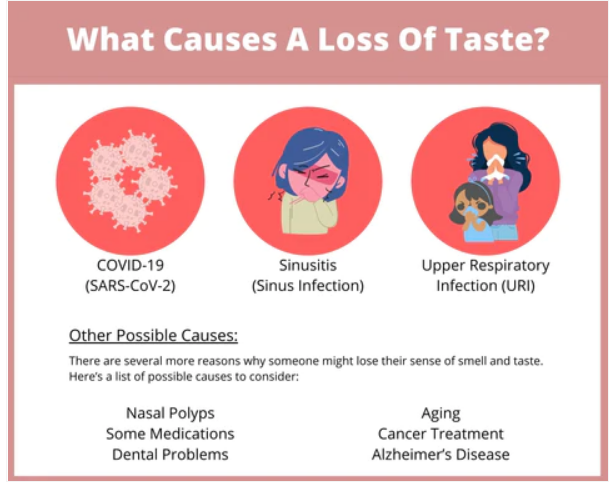/*! elementor - v3.13.3 - 28-05-2023 */
.elementor-widget-image{text-align:center}.elementor-widget-image a{display:inline-block}.elementor-widget-image a img[src$=".svg"]{width:48px}.elementor-widget-image img{vertical-align:middle;display:inline-block}

/*! elementor - v3.13.3 - 28-05-2023 */
.elementor-heading-title{padding:0;margin:0;line-height:1}.elementor-widget-heading .elementor-heading-title[class*=elementor-size-]>a{color:inherit;font-size:inherit;line-height:inherit}.elementor-widget-heading .elementor-heading-title.elementor-size-small{font-size:15px}.elementor-widget-heading .elementor-heading-title.elementor-size-medium{font-size:19px}.elementor-widget-heading .elementor-heading-title.elementor-size-large{font-size:29px}.elementor-widget-heading .elementor-heading-title.elementor-size-xl{font-size:39px}.elementor-widget-heading .elementor-heading-title.elementor-size-xxl{font-size:59px}
Why do some people require nasal and sinus surgery? – FAQs
The nose is the first point of communication for air entry from the environment to the nasopharynx and lungs. Sinuses are air-filled cavities in our faces and behind our eyes. They are lined by mucous membranes that secrete mucus, which traps microorganisms and dust that enter the nose. They are subsequently drained to the back of the nose through an organized drainage pathway.
So, what are the reasons to have nasal and sinus surgery?
Nasal passage is blocked for any reason can lead to nasal obstruction, difficulty in breathing, reduced smell sensation and disturbed sleep
Deviated nasal septum
Sluder’s Neuralgia
Tumors

What are the reasons for Sinus Surgeries?
When you have badly damaged sinus tissue, benign growths (called polyps), a fungal infection, or structural problems that are preventing your sinuses from draining, you may need sinus surgery
Recurring sinus infections with an impaired immune system
Nasal polyps and severe allergies
Antrochoanal polyp
Fungus ball
Allergic fungal sinusitis (AFRS)
Foreign body in the sinuses
Chronic bacterial sinus infections that have failed all medical interventions
Aspirin sensitivity
Tooth abscess

Important tip:
Unfortunately, some people are more prone to colds. Usually, you can treat allergies or try to avoid getting colds just by washing your hands regularly. Thereby you can avoid surgery
How is sinus surgery done?
Sinus surgery is done via an endoscope, and it’s also called Functional Endoscopic Sinus Surgery(FESS). After pre-anesthetic evaluation and under general anesthesia, an endoscope of 4 mm diameter is introduced to the nose. The images are magnified on the attached screen, and surgery is done with specialized endoscopic nasal instruments. The endoscopy procedure offers an opportunity to collect tissue samples to test for diseases, disorders, and conditions that may be causing inflammation, blockages, cancer links, and swelling in the nose.
Before surgery:
Here are a few things you can do before surgery to help things go more smoothly:
● Tell your doctor about any medications you are taking and ask whether you should take them on the morning of surgery.
● Stop smoking at least 3 weeks before your surgery date.
● Arrange for an attendee for the duration of hospitalization, usually 1-3 days depending on the type of surgery.

What are the risks of endoscopic sinus surgery?
As with any surgery, there are risks involved with having endoscopic sinus surgery. While risks with sinus surgery are exceedingly rare, it is important for you to understand what these are.
● Bleeding: During surgery, small amounts of blood loss are expected and these are tolerated well by patients. Mild bleeding after surgery is also common and usually subsides after the first day. Very rarely bleeding occurs after surgery that requires a visit to your surgeon and may involve placement of nasal packing to stop the bleeding. In rare cases, excessive bleeding may occur that requires stopping the surgical procedure.
● Infection: Patients are usually given a dose of antibiotics during surgery and a prescription for antibiotics after surgery to reduce this risk. Occasionally a patient may develop a sinus infection after surgery that requires a stronger antibiotic.
● Cerebrospinal fluid (CSF) leak: During endoscopic sinus surgery the surgeon is working beneath the bone that separates the brain from the nose. It is extremely rare for this bone to be injured during sinus surgery, which would result in a CSF leak. Such an injury would generally be identified at the time it occurred and would be repaired immediately.
● Changes in vision: The sinuses are very close to the eyes, and therefore injury to the eyes may occur during sinus surgery resulting in temporary or permanent double vision or visual changes. Injury to the tear ducts may also cause excessive tearing after surgery. Fortunately, these are exceedingly rare complications. Swelling may also occur around the eyes after surgery. Temporary blurry vision does occur in some patients but resolves without the need for further treatment.
● Other risks include changes in your nasal breathing or sense of smell. If a septal surgery is performed during your sinus surgery there is a small risk of developing a septal perforation or numbness in your teeth.

After surgery:
You can expect some nasal stuffiness, bleeding, and crusting for 3-6 weeks after surgery. You have to come for follow-up visits to our OPD at 1 week, 3 weeks, and 2.5 months after surgery for “post-operative nasal endoscopy.” Many patients are back at work or school 2-3 days after surgery. Following these suggestions can help you prevent complications and recuperate more quickly
The First Few Days
● Sleep with your upper body elevated to keep pressure off of your head.
● Nasal douching with a Nasowash kit is mandatory for three times daily for 1st-week post-op. Expect few clots /blood-stained discharge during the wash.
● Use pain medication as directed by your doctor or mild non-aspirin pain relievers (Calpol/Dolo).
● Take any additional medications prescribed by your doctor.
● Drink plenty of fluids to prevent dry mouth. A bedside humidifier may be helpful(OPTIONAL)
● To help control any bothersome nasal bleeding, an icepack can be applied over the nose and cheeks. Tilt your head forward while sitting up and breathe gently through your nose. Do not
snort the blood through your nose as this will promote more bleeding. If bleeding continues, otrivin or nasivion nasal decongestant spray (1-2 sprays in each nostril) may be used sparingly every 6 to 8 hours for 1-2 days.
The First Few Weeks
● Continue the nasal douching- Nasowash in the bottle to squirt the solution into your nose a few times a day. Otrivin or nasivion nasal decongestant spray will open the nasal passage and may be used just before rinsing with salt water.
● In case of nasal splint application in surgery- it will be removed during your first follow-up visit, generally around Post op day 7 in ENT OPD
● Mild headache and tingling of your upper teeth are expected in the first week of surgery.
● Your doctor may recommend that you use a nasal steroid spray 15-30 minutes after using the salt-water rinse.
● You will need several visits after surgery to clear out old blood and mucus. This involves follow-up visits to our OPD at 1 week, 3 weeks, and 2.5 months after surgery for “post-operative nasal endoscopy”. During these visits, any persistent inflammation or scar tissue will be removed after a topical anesthetic is sprayed into the nose. For your comfort, we recommend that you take a dose of your prescribed pain reliever immediately before these visits.
● For several weeks, you will have some thick discolored drainage from your nose. This occurs as the sinuses begin to clear themselves. This is normal and does not indicate an infection.
● Take it easy and avoid bending, straining, and exercising for at least 1 week. No vigorous activity is allowed until healing is complete, usually in about 2 weeks.
● Severe diarrhea from antibiotic usage can be a sign of a serious medical problem. If this occurs, stop taking the antibiotic.
Other Instructions
Diet
– Intake of 3-4 liters of fluids daily (if no medical condition contradicts the same).
-Normal regular diet is advised. Avoid spicy, oily, and sour foods to reduce acidity.
Bathing
-You can have a complete body bath the same day or the next day.
Physical activity
-Mobilize on the same day following 4-5 hours of surgery
-Walking, non-strenuous activities can be started from post-op day 2.
Important Tips
● Cough and sneeze with your mouth open.
● Do not blow your nose during the first week. During that time, if you have congestion, sniff gently and spit into a tissue.
● Avoid hot, spicy foods.
● Do not drink through a straw.
Visit your doctor if:
● You are bleeding excessively.
● You have signs of an infection such as fever, yellow-green drainage, unrelieved headache, or increased pain.
● You have decreased or double vision, swelling of the eyes, a stiff neck, or extreme fatigue.
● You have clear watery drainage from your nose.
– Dr. Prashanth R Reddy
“E.N.T. health – ENTry for better senses”.
Previous BlogNext Blog


































